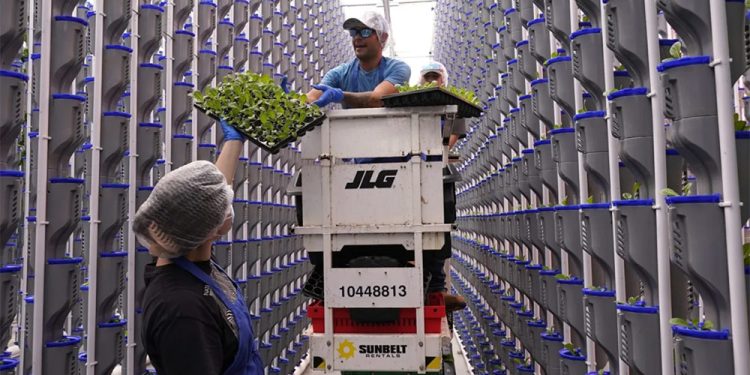#GreenhouseFarming #IndoorFarming #AgricultureTechnology #SustainableFarming #EnvironmentalImpact #InnovationInAgriculture
The United States has witnessed a growing interest in indoor farming, with companies like Eden Green Technology leading the way. Situated in Cleburne, Texas, Eden Green Technology operates vertical farms where workers meticulously cultivate vegetables like lettuce in controlled environments. The appeal of indoor farming lies in its ability to produce fresh crops year-round, free from the constraints of weather and with minimal land and water usage.
However, this industry is not without its challenges. While companies like Plenty Unlimited and Kroger are investing millions in greenhouse projects, others like AeroFarms and AppHarvest have faced financial setbacks, highlighting the volatile nature of the business. High energy consumption, especially for artificial lighting, poses a significant concern, raising questions about the environmental claims of indoor farming.
Experts like Tom Kimmerer, a plant physiologist at the University of Kentucky, emphasize the need to address practical issues in outdoor farming, such as climate change adaptation and financial support for renewable agriculture, rather than solely investing in high-tech indoor solutions. Despite the potential benefits, indoor farming introduces its own set of problems, including pest management challenges, as highlighted by ecologist Hannah Brack from Michigan State University.
Companies in the indoor farming sector emphasize stringent hygiene measures and technological advancements to mitigate these challenges. Eden Green Technology, for instance, maintains laboratory-grade cleanliness and minimal pesticide usage in their vertical farms. While skeptics doubt the future of indoor farming, collaborations between major retailers like Walmart and industry giants like Plenty showcase the potential for success in this field.
The future of greenhouse farming in the United States remains uncertain, balancing on the fine line between innovation and practicality. As the industry continues to evolve, addressing issues like energy efficiency, environmental impact, and pest control will be crucial. Collaborations between large corporations, researchers, and policymakers can pave the way for a sustainable indoor farming future, ensuring a steady supply of fresh produce to meet the demands of a growing population.











